
Data-driven Planning for Powering Healthcare in Jharkhand
India is the world’s fifth largest and fastest growing economy. Its energy demand is likely to account for a quarter of the global energy demand over the next 20 years. The state of Jharkhand, the powerhouse of the country for the last few decades, faces significant reliance on coal-related incomes. As it faces the intertwined challenges of climate change and multi-dimensional poverty, Jharkhand can serve as an apt candidate for an economic and energy transition that addresses these challenges.
Jharkhand experienced a remarkable increase in the electrification of rural households with almost a 100% surge in the number of households achieving electrification under the SAUBHAGYA Scheme between March 2019 and 2021. However, the Rural Health Statistics 2021-22 indicated that almost 13% of both Primary Health Centers (PHCs) and Health Sub-centers (HSCs), which serve as the first point of contact for the community, remain unelectrified in Jharkhand.
Penetration of grid-based electricity is quite challenging in the rural and tribal parts of the state due to the rough terrain, densely forested areas and remote location of hamlets. This makes decentralized renewable energy (DRE) technologies a better option for the government to ensure reliable electricity in the health facilities in these areas.
The Jharkhand Renewable Energy Development Agency (JREDA) has been solarizing health facilities and other government departments in different phases of the Grid Connected Rooftop (GCRT) solarization project. To electrify Health Care Facilities (HCFs) in a phased manner, JREDA used the Energy Access Explorer (EAE) for identifying and prioritizing healthcare facilities as part of the GCRT Project. EAE has been designed and developed by WRI India and partners as an online, open-source, interactive, geospatial platform to help aid decision-making to accelerate socio-economic and human development at the state level.
Launched in December 2021 in Ranchi, the capital city of Jharkhand, EAE enables users to carry out multi-criteria analysis based on selected demand and supply indicators, which include social and productive uses of electricity, such as in public schools and health centers. This comprehensive approach captures the current and potential demand for energy and resource availability while providing valuable infrastructure-related data to visualize current and potential electricity supply.
Institutions like healthcare facilities, schools and police stations were solarized under the GCRT project. EAE’s analysis allowed the prioritization of health facilities that faced irregular and unreliable power supply for solarization – for instance, in Community Health Centres (CHCs) (Dumri, Ghaghra, Kamdara, etc.) in Gumla district. Additionally, this helps the state achieve its goal of increasing DRE capacity to 1GW by 2027, as mentioned in Jharkhand’s Solar Policy 2022.
EAE allows users to visualize data with a high degree of granularity. Figure 1 displays the location of 3,493 health facilities comprising HSCs, PHCs and CHCs, which are unelectrified or have irregular power supply, spread across the state. The data on their electricity status of these centers is obtained annually from the National Health Mission, Jharkhand Health Management Information System.
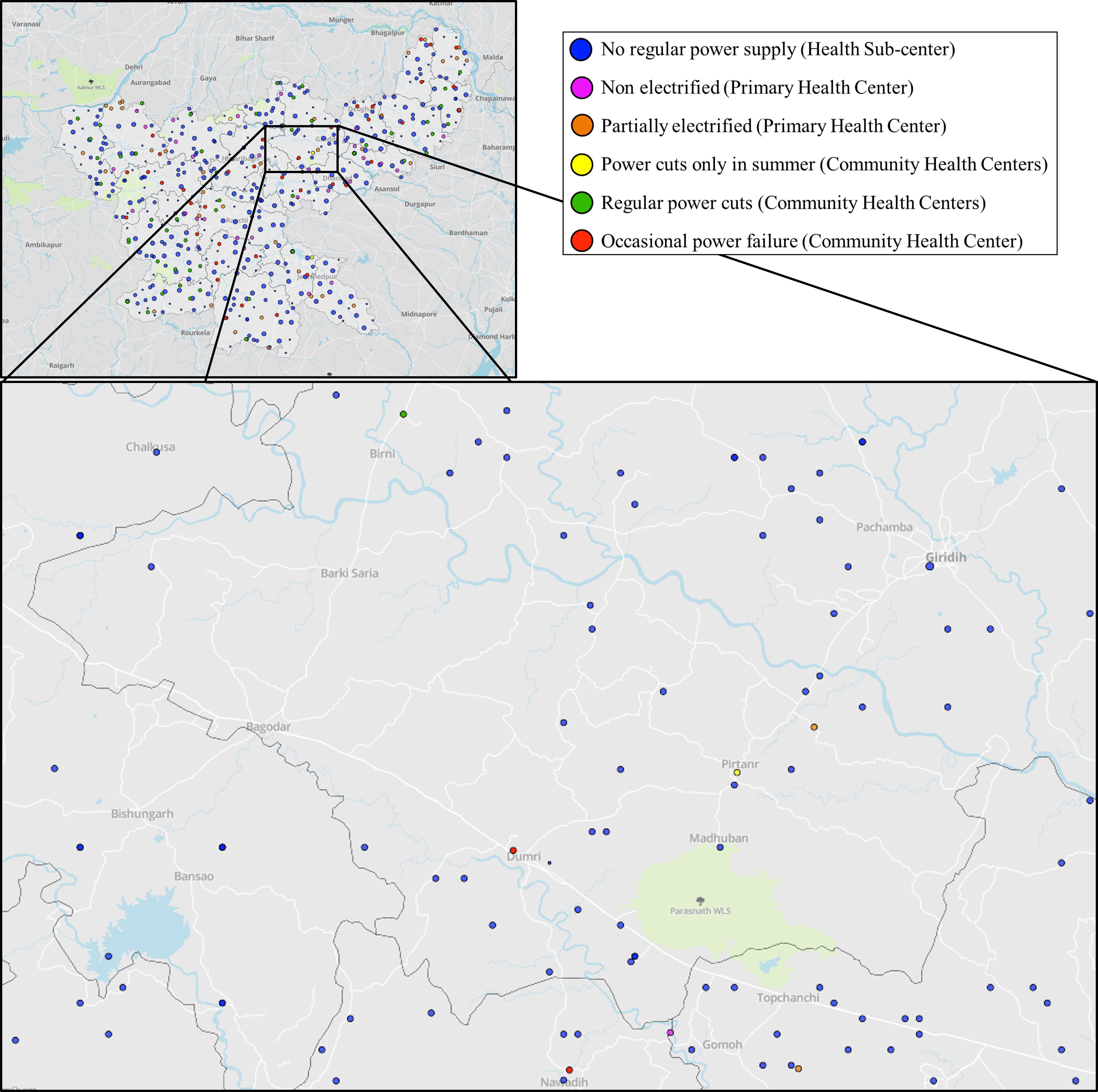
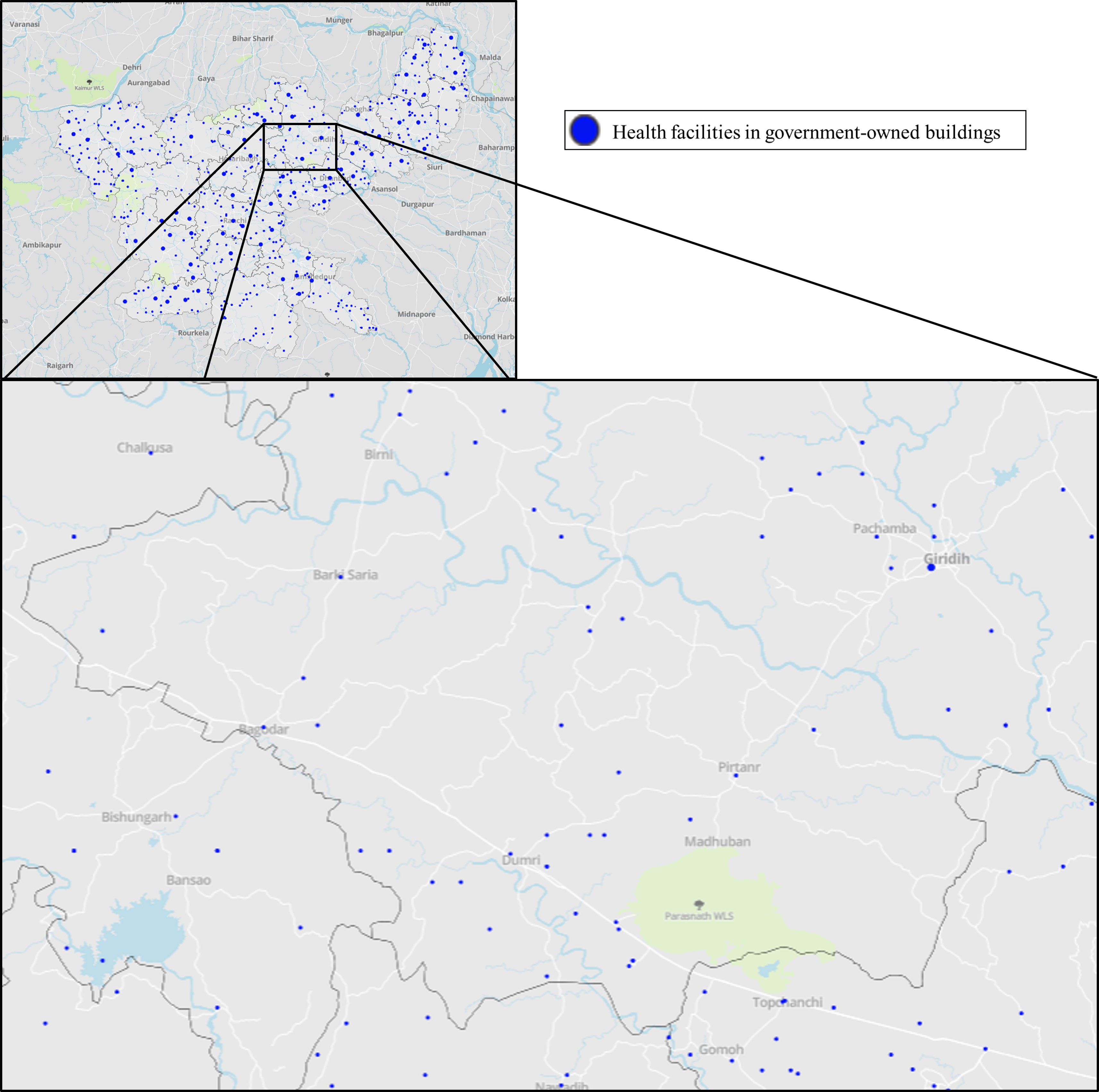
Figure 2 displays location of all the government owned HCFs. This does not include facilities located in rented buildings since solarization in rented buildings is not ideal.
Data related to solar irradiance, specifically Global Horizontal Irradiance (GHI) (Figure 3) i.e. the total solar radiation received by a horizontal surface, is obtained from the Global Solar Atlas. This atlas utilizes data inputs from satellites and meteorological models. This is used to assess solar potential at a given site and helps inform the size of the solar PV panel that can be installed.
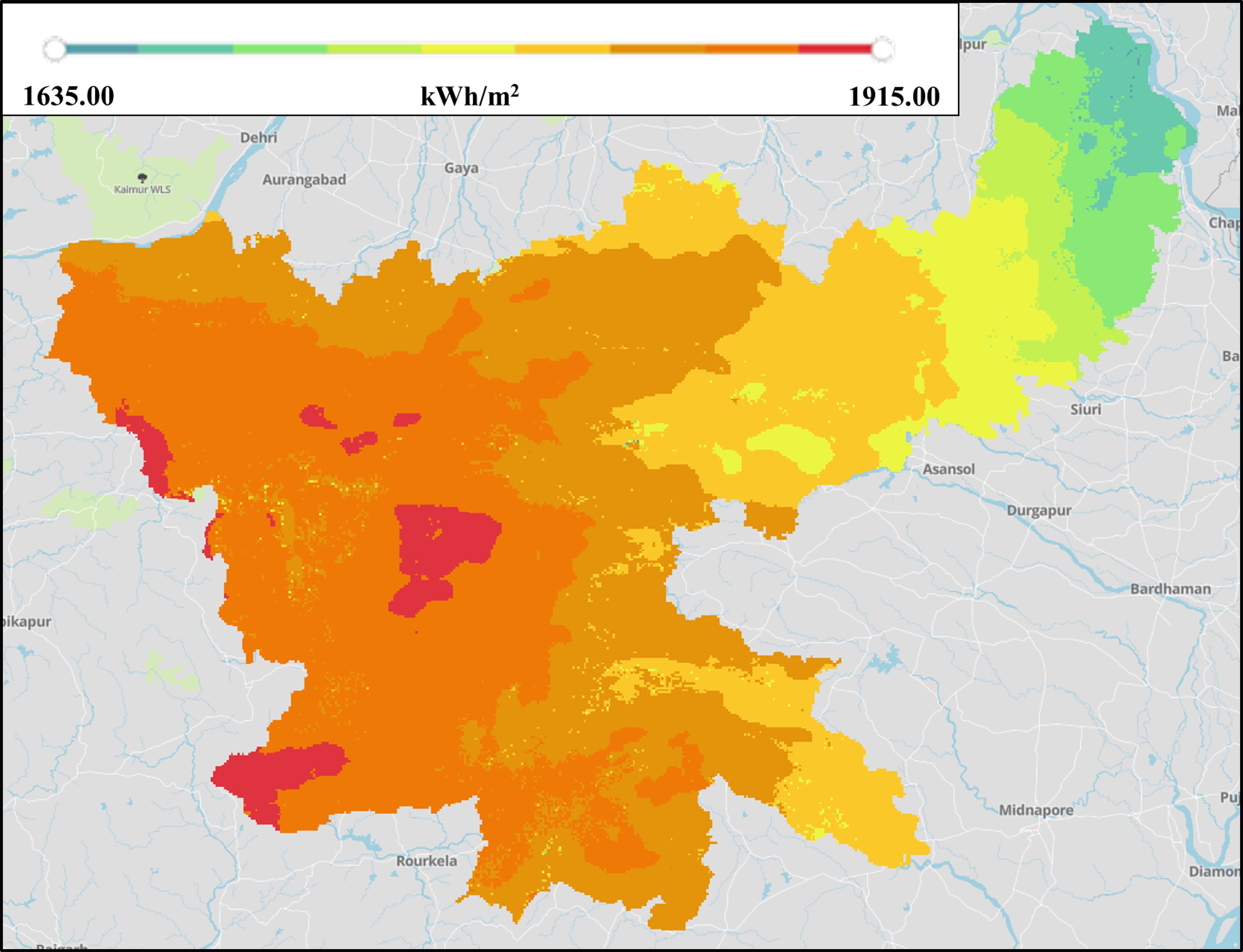
After plugging in this data, a prioritization table (Table 1) was created focusing on government-owned buildings, power supply and solar irradiance (measure of the sun’s intensity over a certain area in watts per meter square) at the location. On the other hand, facilities that might have had regular power cuts, but had a lower GHI, fell second in the order of priority.
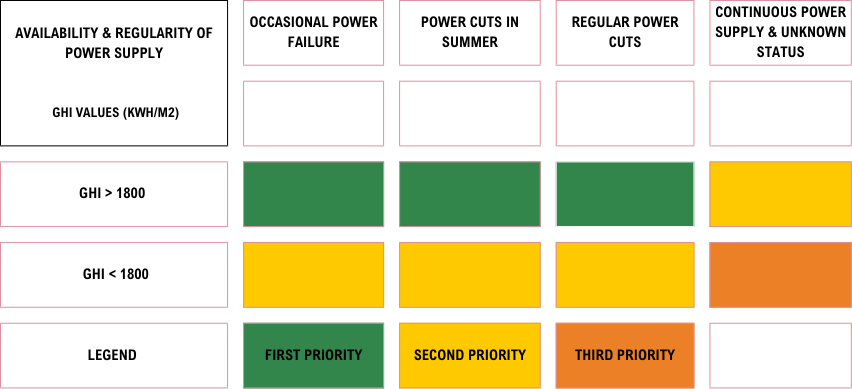
Government-owned Buildings With a GHI Above 1800 kWh/m2 per Year
For the final shortlisting exercise, data related to government-owned health facilities was overlayed with GHI (Figure 4A) above 1800 kWh/m2 per year to get the areas with high energy access potential (Figure 4B). The health facilities falling in these areas were selected and the list was provided to JREDA. Following this, the Director of JREDA announced the solarization of 300 Primary Health Centres.
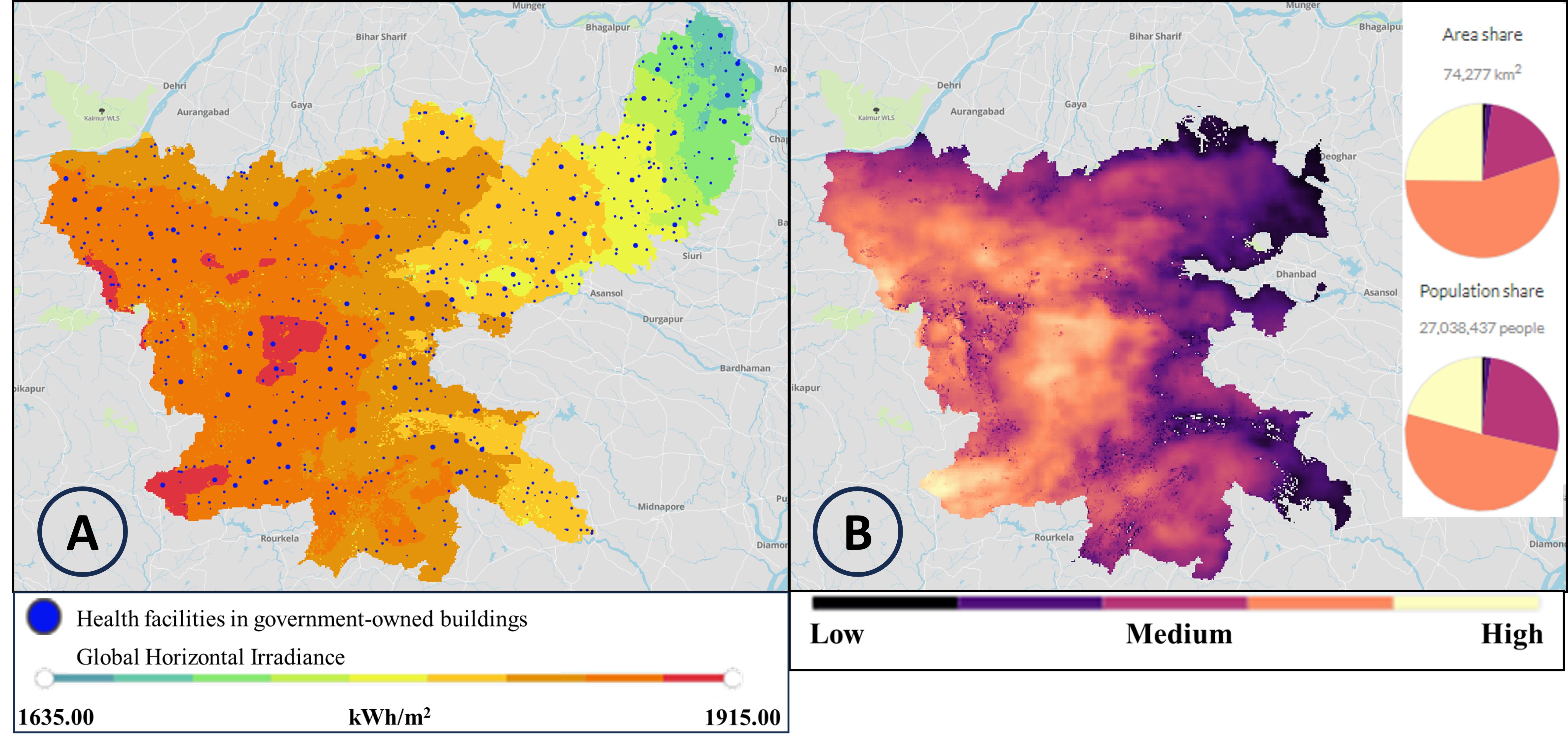
Spatial analysis through EAE offers versatile applications, aiding energy demand management and helping achieve renewable energy goals. It empowers decision-makers to visualize energy gaps and prioritize locations for electrification through on-grid energy or DRE, based on factors like population density and access to infrastructure, such as road networks, etc. Similar analysis can be expanded to electrify government schools, livelihood enterprises, cold storages, etc.
EAE supports India’s vision to achieve Universal Healthcare For All by 2030 since access to energy acts as an enabler in improving health services. In this analysis, EAE supported progress on SDG 3 (good health and well-being) through SDG 7 (access to affordable and clean energy). This can be replicated to other SDGs, thereby fostering economic growth, eradicating poverty and enhancing human well-being.
All maps sourced from the Energy Access Explorer.
All views expressed by the authors are personal.